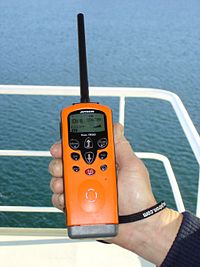
Photo from wikipedia
Recent research has shown that human motions and positions can be recognized through WiFi signals. The key intuition is that different motions and positions introduce different multipath distortions in WiFi… Click to show full abstract
Recent research has shown that human motions and positions can be recognized through WiFi signals. The key intuition is that different motions and positions introduce different multipath distortions in WiFi signals and generate different patterns in the time-series of channel state information (CSI). In this paper, we propose Wi-Motion, a WiFi-based human activities recognition system. Unlike existing systems, Wi-Motion jointly leverages the amplitude and phase information extracted from the CSI sequence. We first construct the classifiers using amplitude and phase, respectively. The output of classifiers is then combined by a posterior probability-based combination strategy. As the simulation results show, Wi-Motion can recognize predefined 5 typical human activities with the mean accuracy of 96.6% in line-of-sight (LOS) environment, and 92% in not line-of-sight (NLOS) environment. Furthermore, Wi-Motion evaluates the effect of the age of the experimental subjects and relatively complex environments.
Journal Title: IEEE Access
Year Published: 2019
Link to full text (if available)
Share on Social Media: Sign Up to like & get
recommendations!